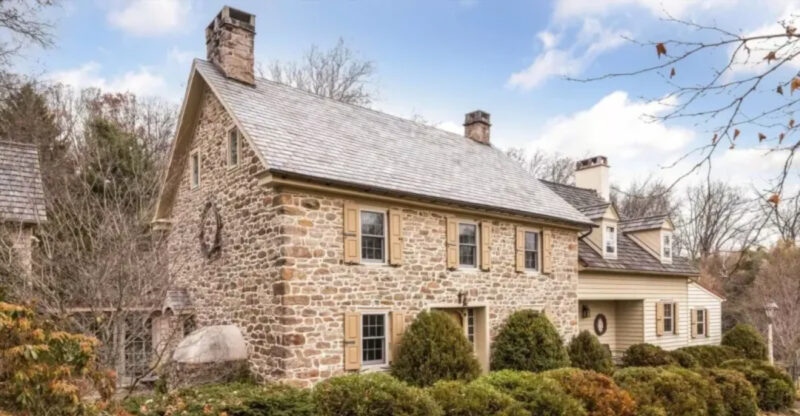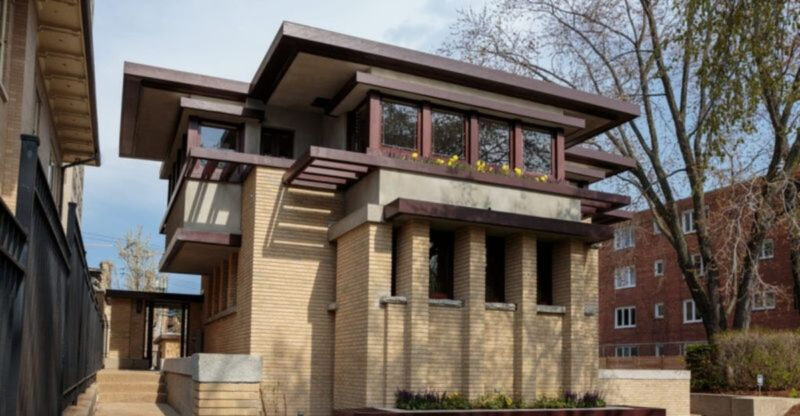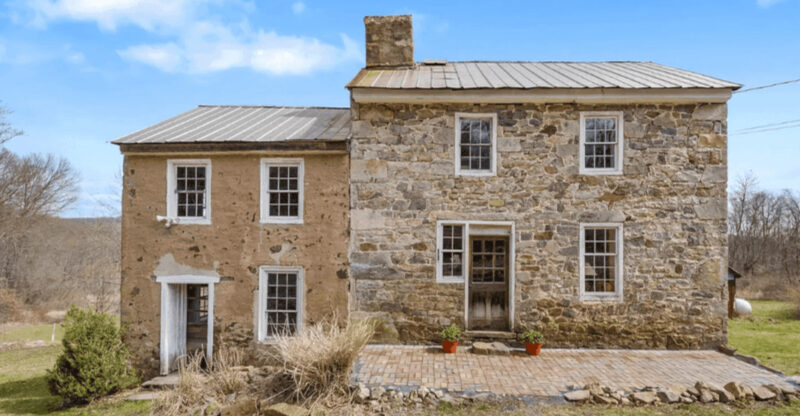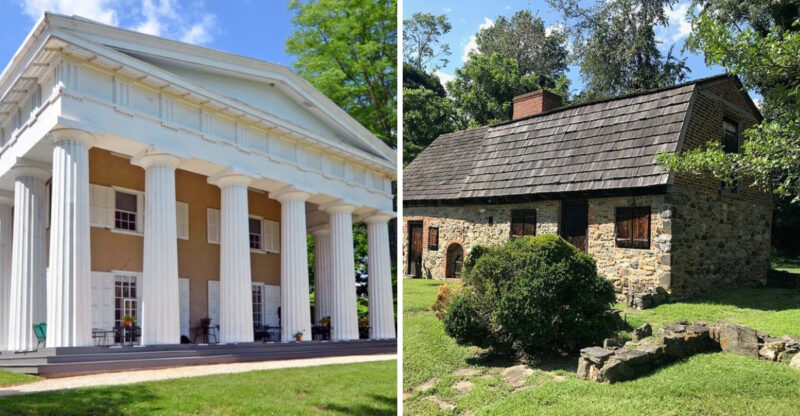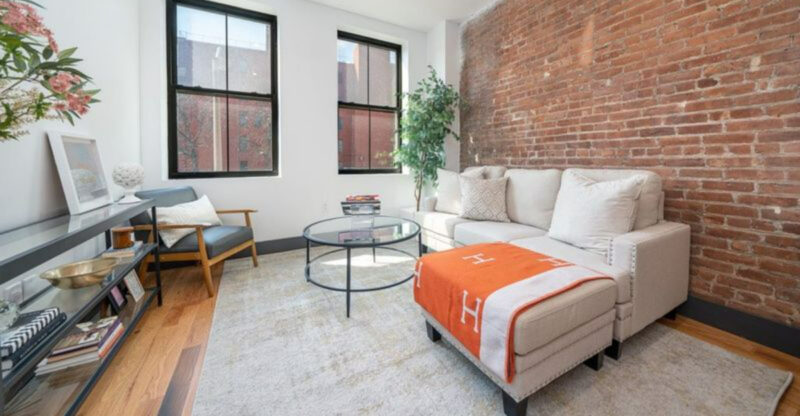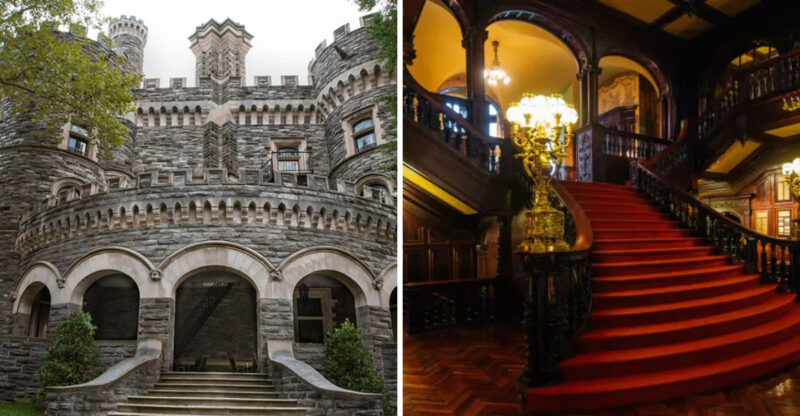24 Historic Mansions In Georgia That Offer Glimpse Into The Grandeur Of Bygone Eras
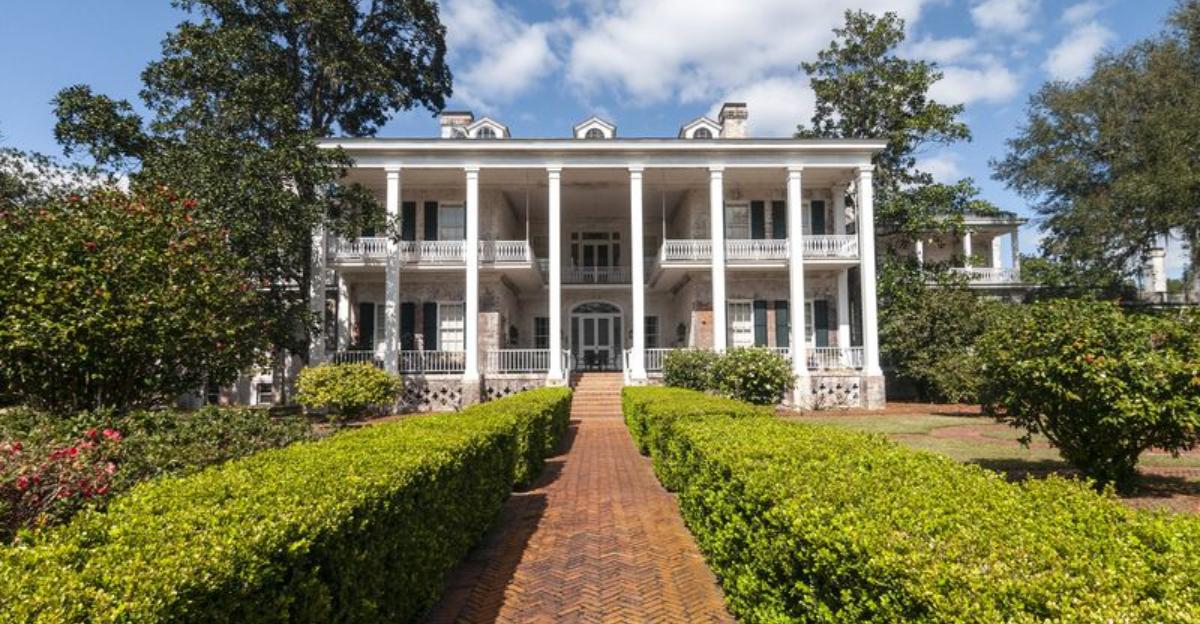
Georgia’s historic mansions stand as magnificent time capsules, preserving the opulence and architectural brilliance of America’s past.
These grand homes, with their towering columns, intricate woodwork, and sprawling gardens, tell stories of wealth, ambition, and the complex history of the South.
Walking through these preserved estates offers visitors a chance to step back in time and experience the lavish lifestyle of Georgia’s elite across different historical periods.
1. Old Governor’s Mansion – Milledgeville
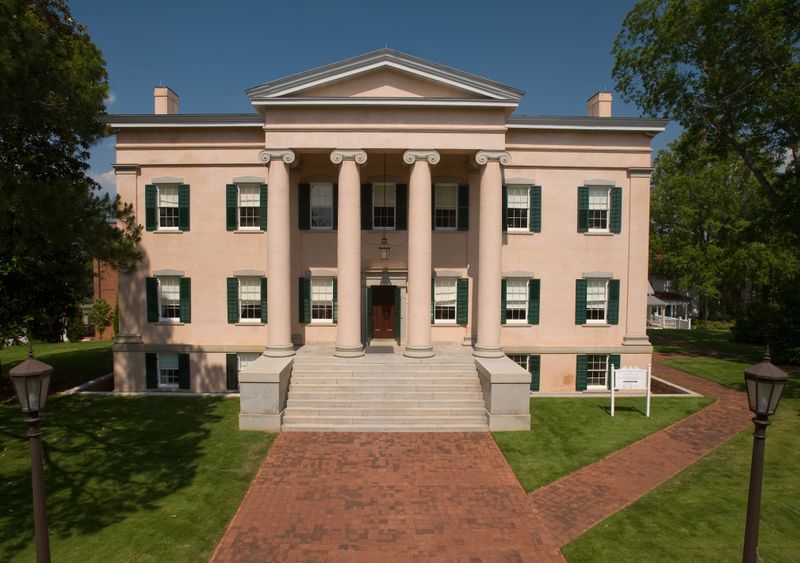
Stately and imposing, this Greek Revival masterpiece served as the official residence for Georgia’s governors from 1839 to 1868. The mansion witnessed critical moments during the Civil War, including General Sherman’s infamous March to the Sea.
Inside, visitors marvel at the meticulously restored rooms featuring period furnishings, ornate plasterwork, and a stunning spiral staircase that seems to float without support. The mansion’s architectural significance earned it designation as a National Historic Landmark.
Tours reveal fascinating stories about the ten governors who lived here and the enslaved people who maintained the property. The mansion’s museum now educates visitors about 19th-century politics, architecture, and daily life in antebellum Georgia.
2. Andalusia Farm – Milledgeville
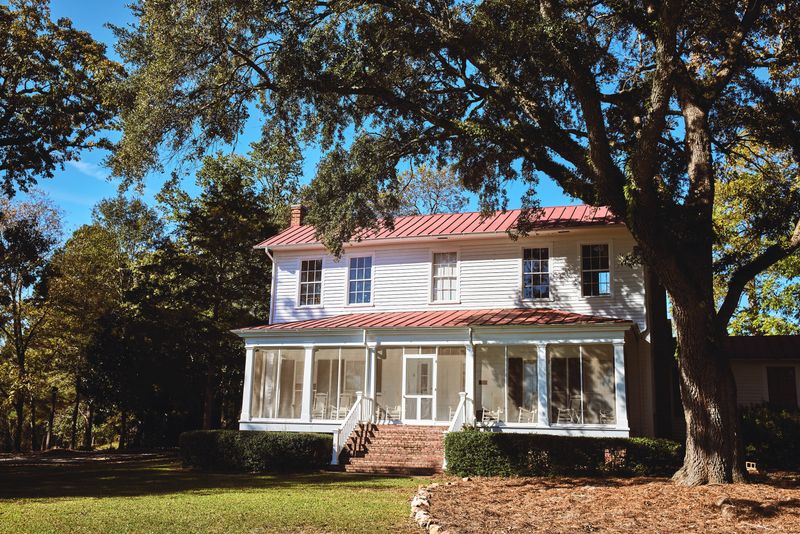
Tucked away on 544 acres of gorgeous countryside sits Andalusia Farm, the beloved home of celebrated American author Flannery O’Connor. She lived here from 1951 until her death in 1964, creating some of her most famous Southern Gothic stories while managing her lupus diagnosis.
The white clapboard farmhouse retains its 1950s charm with original furnishings, including O’Connor’s manual typewriter and crutches. Peacocks still roam the grounds, a nod to the writer’s fascination with the birds she raised.
Beyond the main house, visitors can explore the dairy barn, water tower, and serene pond that inspired O’Connor’s writing. Her profound connection to this landscape infuses every corner of this literary landmark.
3. Heritage Hall – Madison
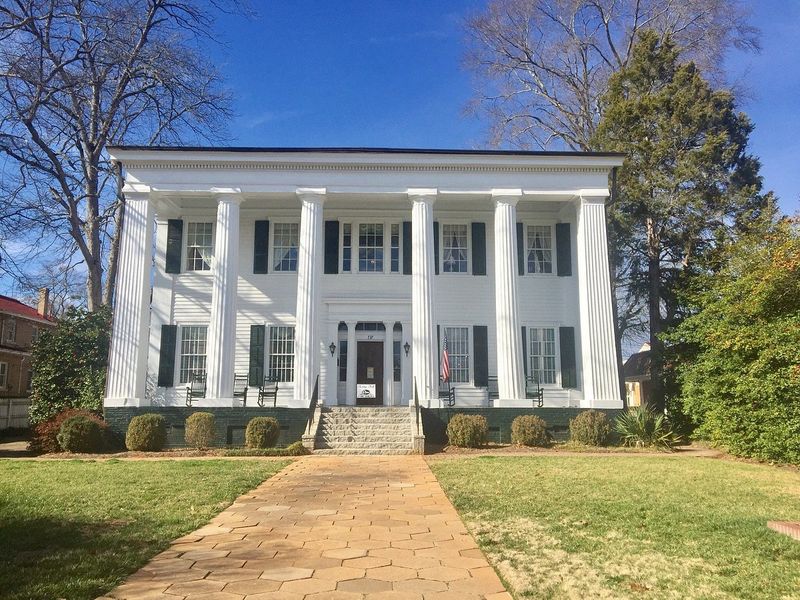
Built in 1811, this stunning Greek Revival mansion showcases the prosperity of Madison during the cotton boom era. Its impressive four columns and symmetrical design immediately catch the eye of passersby on South Main Street.
The interior dazzles with period antiques, original heart pine floors, and an elegant curved staircase that serves as the home’s centerpiece. Hand-painted murals depicting scenes from Madison’s history adorn several walls, adding unique character to this architectural gem.
Heritage Hall narrowly escaped destruction during Sherman’s March when a Union doctor commandeered it as his headquarters. Local lore suggests he spared the town from burning because of its beauty. Today, guided tours highlight both the architectural significance and the fascinating human stories connected to this magnificent home.
4. Rogers House & Rose Cottage – Madison
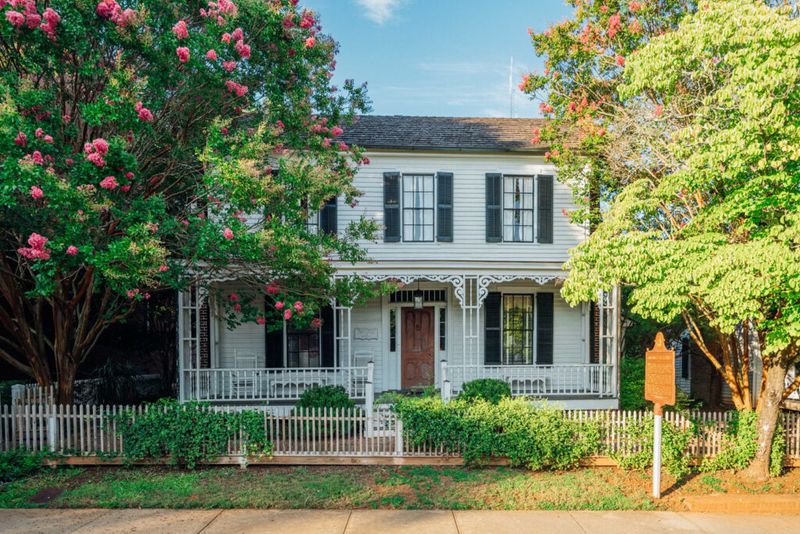
When visiting these twin treasures in Madison, you’ll experience two distinct perspectives on 19th-century Georgia life. The Rogers House, built in 1809, represents the refined lifestyle of wealthy plantation owners with its Federal-style architecture and spacious rooms filled with period furnishings.
Just steps away, the more modest Rose Cottage offers a rare glimpse into the life of a free Black woman in pre-Civil War Georgia. This small home belonged to Adeline Rose, a former slave who purchased her freedom and became a successful seamstress and property owner.
Together, these homes create a powerful juxtaposition of experiences during a pivotal era in Southern history. The beautifully preserved structures now serve as museums where visitors can explore authentic artifacts and learn about daily life across social boundaries.
5. Stately Oaks Plantation – Jonesboro
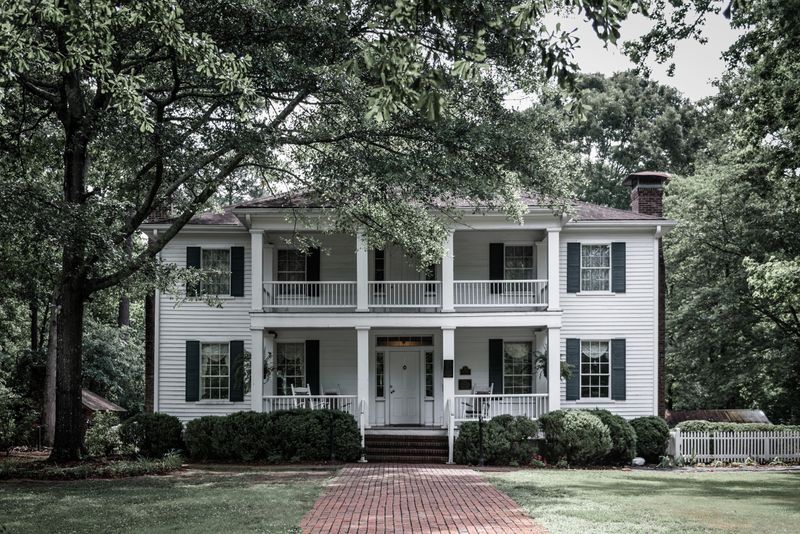
Journey back to 1839 when this magnificent Greek Revival plantation home first graced the Georgia landscape. Though not the actual Tara from “Gone With the Wind,” Stately Oaks certainly embodies the grandeur that inspired Margaret Mitchell’s fictional estate.
Rescued from demolition in 1972, the house was carefully moved to its current location and meticulously restored. Each room displays authentic period furnishings, giving visitors an immersive glimpse into antebellum Southern life. The grounds include several outbuildings like a cookhouse, blacksmith shop, and one-room schoolhouse.
Costumed docents bring history to life through engaging tours that don’t shy away from discussing both the privilege of plantation owners and the harsh realities faced by enslaved people. This complex historical narrative makes Stately Oaks a particularly meaningful destination for history enthusiasts.
6. Margaret Mitchell House – Atlanta
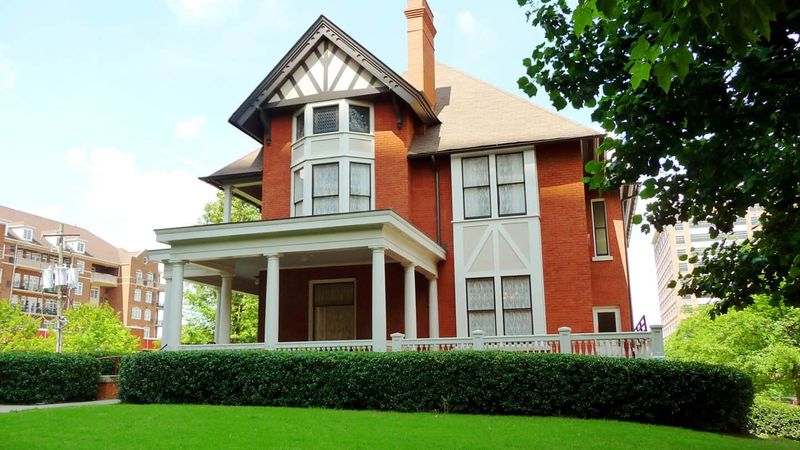
Housed within a modest Tudor Revival apartment building in Midtown Atlanta, this unassuming home witnessed literary history. Margaret Mitchell nicknamed her apartment “The Dump,” yet within these walls she penned one of the world’s best-selling novels, “Gone With the Wind.”
The meticulously preserved apartment showcases Mitchell’s small writing desk tucked into a corner of the living room, where she wrote on a portable Remington typewriter. Personal photographs and memorabilia offer intimate glimpses into the author’s life during the decade she spent crafting her Pulitzer Prize-winning epic.
Beyond the apartment, the museum features exhibits on the book’s publication, the making of the iconic film, and Mitchell’s impact on Atlanta’s cultural landscape. This literary landmark stands as a testament to how extraordinary creativity can flourish in ordinary surroundings.
7. Marsh‑Warthen House – Lafayette
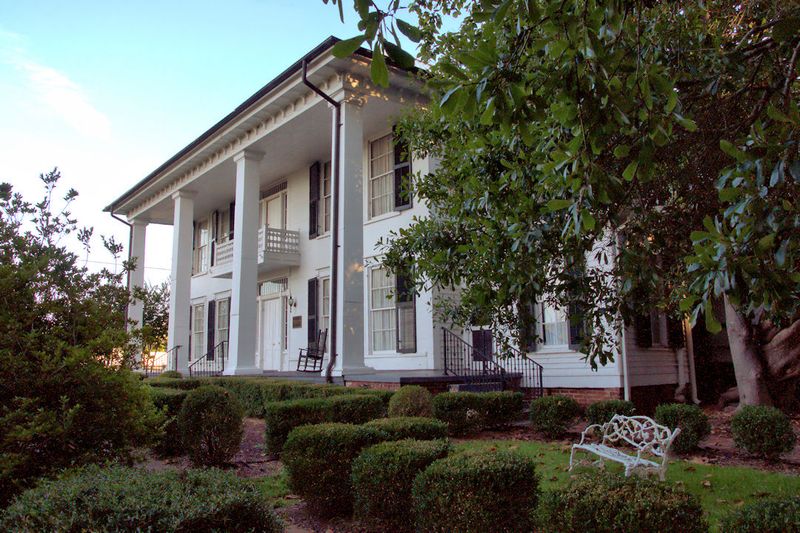
Hidden in northwest Georgia, this architectural gem represents one of the finest examples of Italianate design in the state. Built in 1836 and significantly expanded in 1881, the mansion features distinctive bracketed eaves, arched windows, and an elaborate cupola that served as both decoration and natural air conditioning.
What makes this home particularly special is its remarkable state of preservation. Much of the original furnishings remain intact, including hand-painted murals, marble fireplaces, and ornate plasterwork. The mansion’s unique T-shaped floor plan accommodated the large Warthen family while creating distinct public and private spaces.
During the Civil War, the house served briefly as a headquarters for Union officers. Today, guided tours reveal fascinating stories about the prominent Warthen family and their influence on Lafayette’s development during Georgia’s tumultuous 19th century.
8. Meadow Garden – Augusta
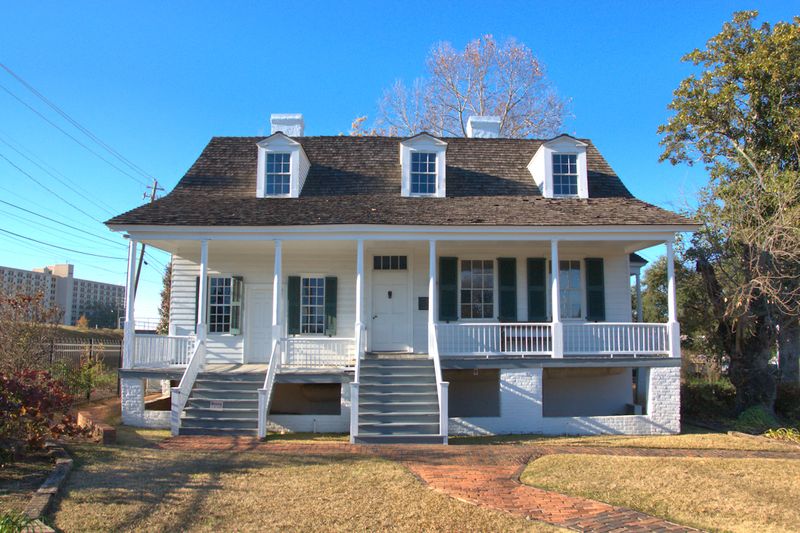
History breathes through every timber of this unassuming white clapboard house, home to George Walton, one of Georgia’s three signers of the Declaration of Independence. Though modest compared to other mansions on this list, Meadow Garden holds immense historical significance as one of the oldest structures in Augusta.
Built around 1791, the house combines Federal and Georgian architectural elements with later Greek Revival additions. Inside, period furnishings and Walton family heirlooms create an authentic portrait of early American domestic life. The original kitchen building still stands separately behind the main house.
Owned and maintained by the Daughters of the American Revolution since 1900, Meadow Garden offers a rare opportunity to connect with Revolutionary era history. Walton’s political contributions to the young nation come alive through thoughtfully curated exhibits and knowledgeable guides.
9. Mercer House – Savannah
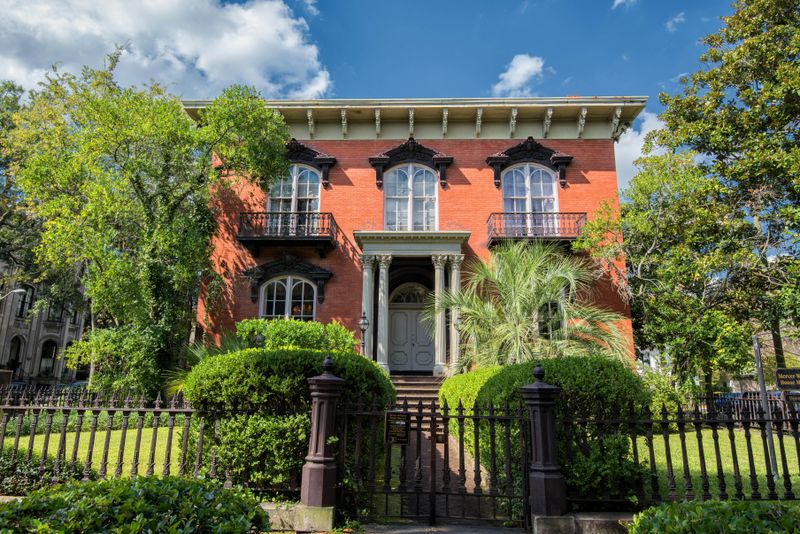
Made famous by John Berendt’s bestselling book “Midnight in the Garden of Good and Evil,” this imposing red brick Italianate mansion captivates visitors with both its architectural splendor and notorious past. Built in the 1860s for General Hugh Mercer, the house later became home to antiques dealer Jim Williams, who restored numerous Savannah buildings.
The mansion gained infamy as the site where Williams shot his assistant, Danny Hansford, in 1981. Williams endured four trials before his eventual acquittal, only to die in the house shortly thereafter, fueling Savannah’s ghost lore.
Beyond its scandalous history, the house showcases museum-quality antiques, rare art, and exquisite craftsmanship. The curved staircase and elaborate plasterwork particularly demonstrate the artistry of 19th-century builders. Today, the house remains privately owned by the Williams family.
10. Mimosa Hall – Roswell
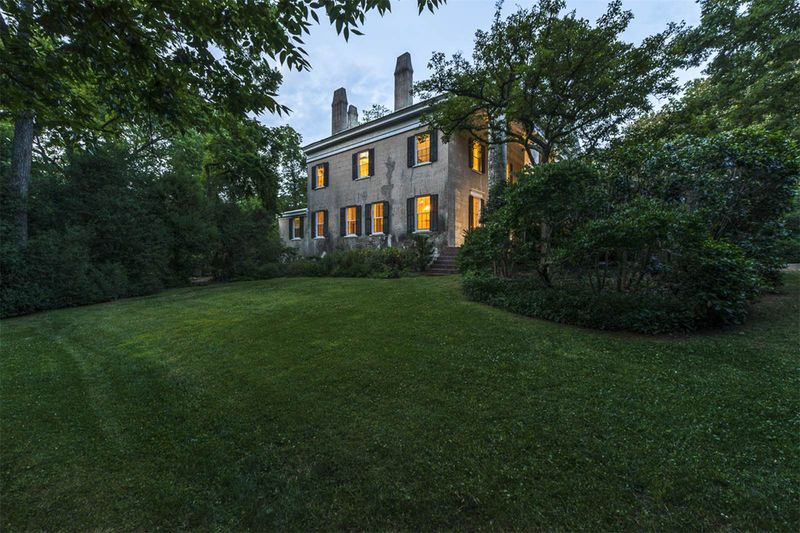
Dating back to 1840, this stately Greek Revival mansion sits on nine acres of gardens that include some of Georgia’s oldest mimosa trees, which inspired its name. The home’s most distinctive feature is its locally quarried white stucco exterior, creating a luminous appearance against the green landscape.
Inside, 6,000 square feet of living space showcases period-appropriate furnishings and architectural details, including heart pine floors and ornate moldings. The mansion’s unique history includes serving as a hospital during the Civil War, when bullet holes were left in the walls as stark reminders of the conflict.
After years as a private residence, the City of Roswell purchased Mimosa Hall in 2017 to preserve it for future generations. Visitors now enjoy guided tours of both the historic home and its gorgeous gardens, which feature rare plant specimens collected over nearly two centuries.
11. Oliver Sturges House – Savannah
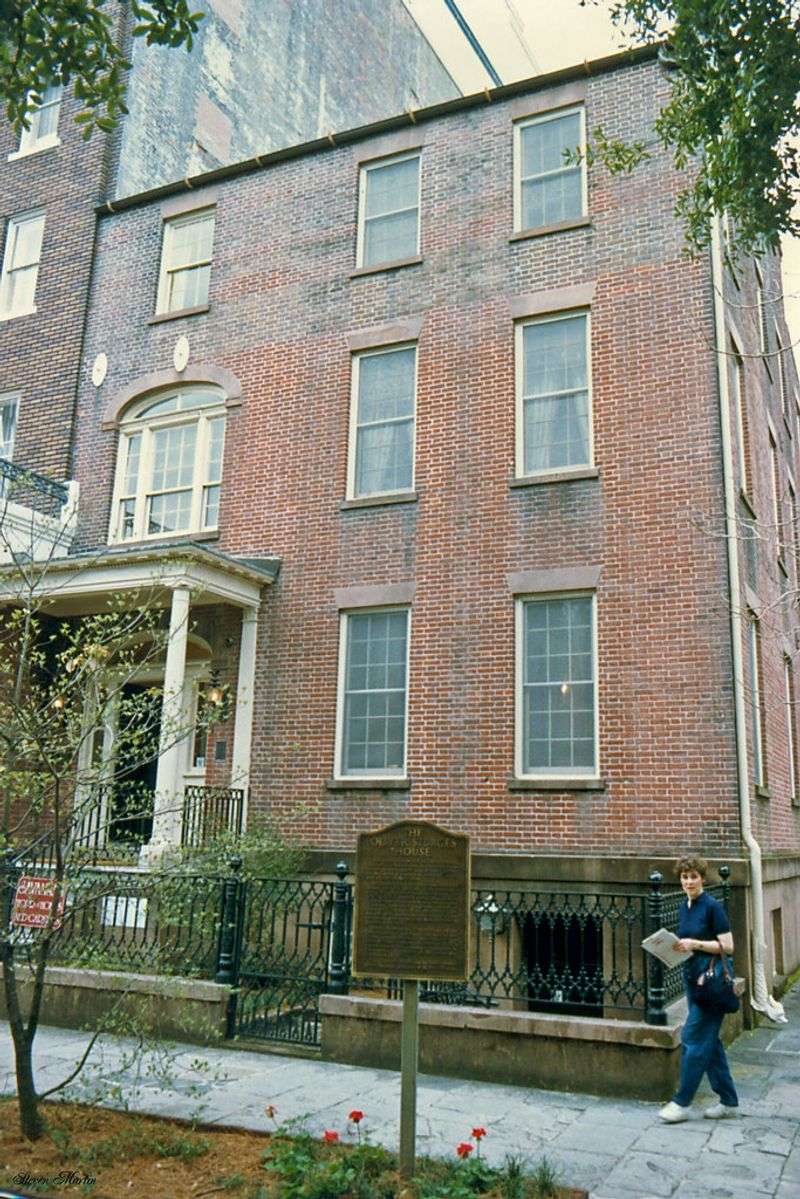
Gracing Savannah’s iconic Oglethorpe Square since 1813, this Federal-style townhouse exemplifies the elegant urban living of wealthy merchants during the city’s early commercial boom. Shipping magnate Oliver Sturges commissioned the home at the height of his prosperity, only to lose his fortune in the financial panic of 1819.
Architectural highlights include a distinctive side entrance, symmetrical façade, and delicate fanlight transoms above doorways. The interior features original heart pine floors, intricate woodwork, and a graceful curved staircase that demonstrates the craftsmanship of early 19th-century builders.
Though less famous than some of Savannah’s other historic homes, the Sturges House holds special significance for architectural historians as one of the finest surviving examples of Federal-style architecture in the South. Its preservation offers valuable insights into Savannah’s development as a sophisticated port city.
12. Owens‑Thomas House – Savannah
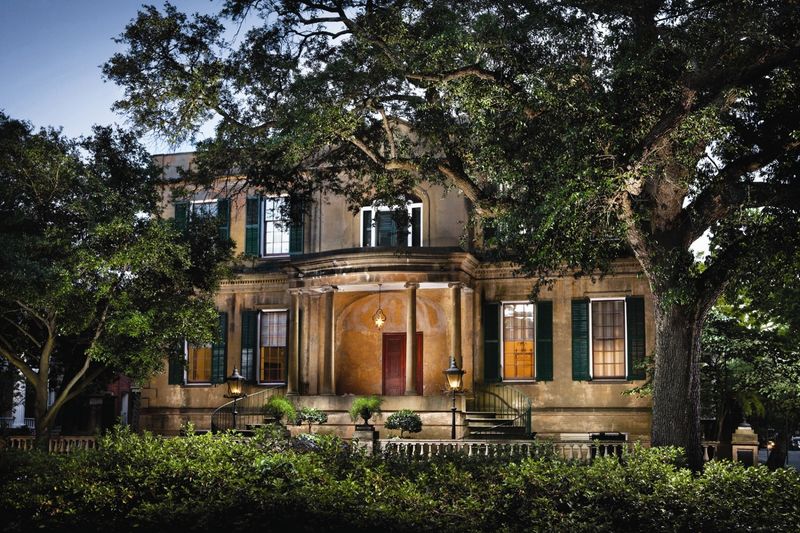
Considered one of America’s finest examples of English Regency architecture, this sophisticated urban mansion was designed in 1816 by British architect William Jay. Its innovative features included indoor plumbing and a bridge connecting the main house to the servants’ quarters – engineering marvels for their time.
The mansion’s elegant curved staircase appears to float without visible support, showcasing Jay’s architectural genius. Decorative arts enthusiasts marvel at the original furnishings, including Regency and Empire pieces that reflect the cosmopolitan tastes of Savannah’s elite.
Perhaps most significantly, the property includes the best-preserved urban slave quarters in the South. Recent interpretations focus on telling the complete story of all who lived here, both free and enslaved. This balanced approach makes the Owens-Thomas House particularly valuable for understanding the complex social dynamics of antebellum Savannah.
13. Harper‑Fowlkes House – Savannah
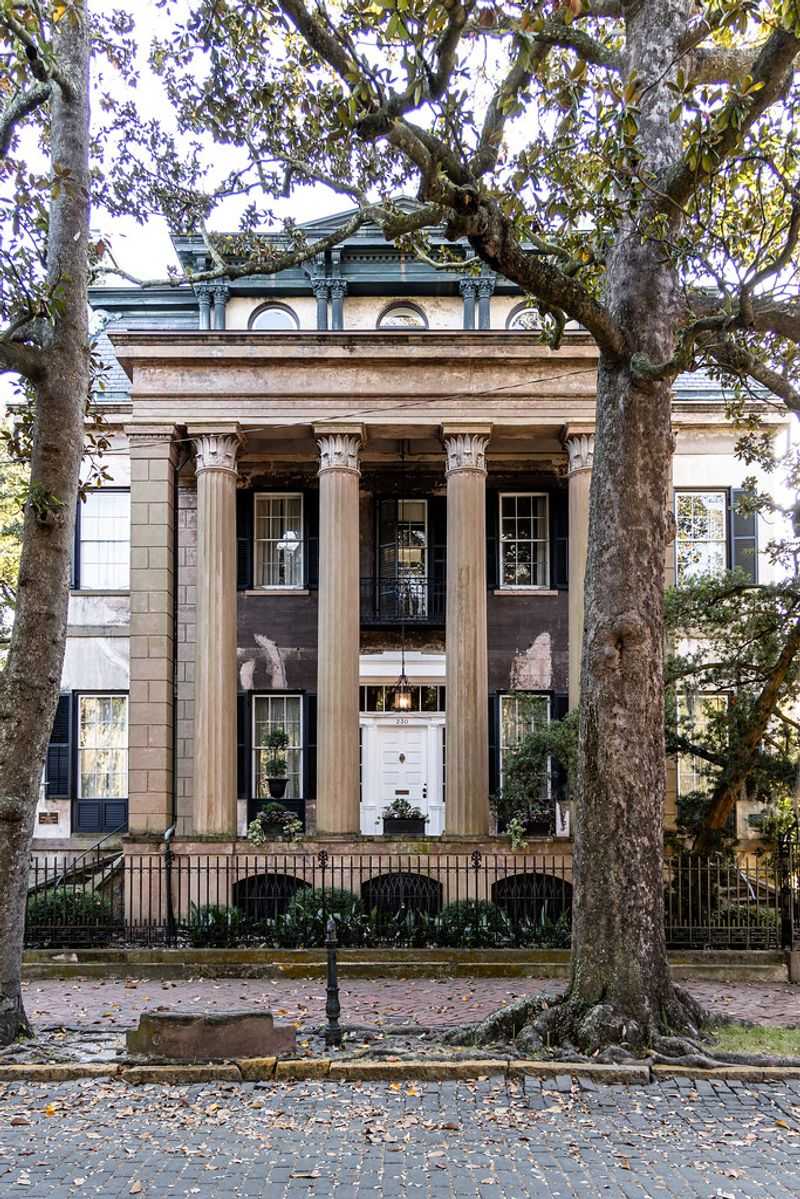
Overlooking Orleans Square in Savannah’s Historic District, this Greek Revival mansion exudes southern elegance with its imposing columns and perfect symmetry. Built in 1842 for wealthy shipping merchant Stephen Gardner, the house later became home to Alida Harper Fowlkes, a pioneering preservationist who helped save numerous Savannah landmarks.
The interior dazzles with elaborate plasterwork ceilings, carved marble fireplaces, and a magnificent spiral staircase that appears to float without support. Period furnishings include museum-quality antiques collected by Harper Fowlkes during her lifetime.
Unlike many historic homes that attempt to recreate a specific era, this mansion uniquely preserves the vision of its last resident. Harper Fowlkes bequeathed the property to the Society of the Cincinnati, who maintain it as a testament to both 19th-century architecture and 20th-century preservation efforts that saved Savannah’s historic character.
14. Davenport House – Savannah
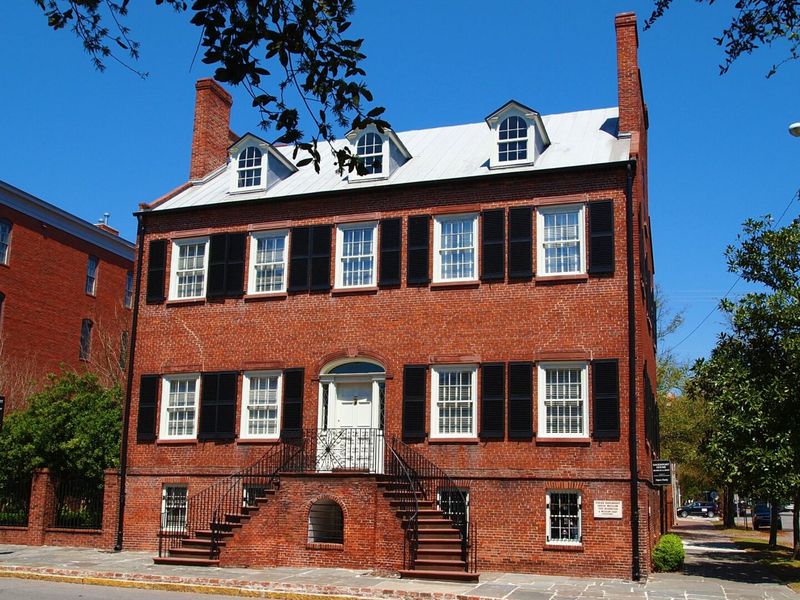
This elegant Federal-style home literally sparked Savannah’s historic preservation movement. When scheduled for demolition in 1955, seven determined women formed the Historic Savannah Foundation to save it, launching a preservation ethic that ultimately rescued Savannah’s entire historic district.
Built in 1820 by master builder Isaiah Davenport for his own family, the brick home showcases his exceptional craftsmanship. The curved staircase, intricate woodwork, and plasterwork ceilings demonstrate the refined architectural tastes of Savannah’s rising middle class during the early 19th century.
Beyond architectural significance, the house museum offers fascinating glimpses into daily urban life two centuries ago. Period-appropriate furnishings, household items, and interactive exhibits help visitors understand how the Davenport family and their enslaved servants navigated daily life in this bustling port city.
15. Greene‑Meldrim House – Savannah
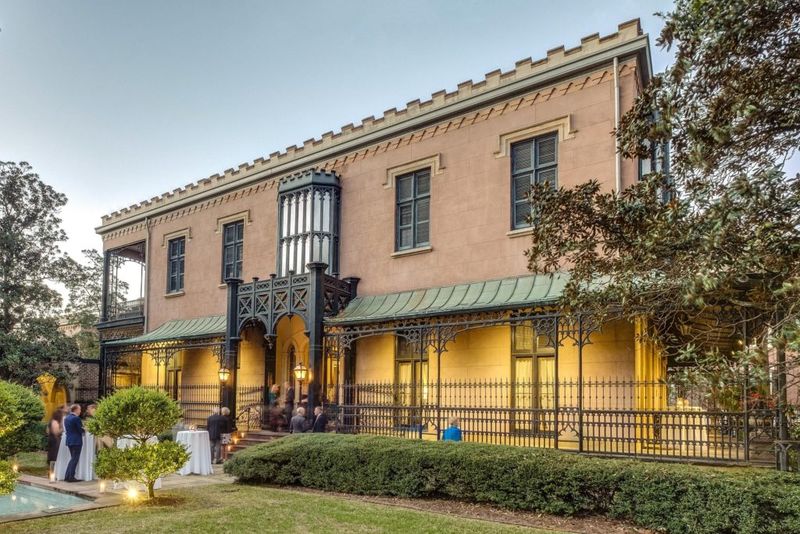
This Gothic Revival masterpiece gained national fame when General William T. Sherman used it as his headquarters after capturing Savannah in 1864. From the ornate cast-iron porch to the imposing crenellated parapet, every detail of this 1850s mansion exemplifies the flamboyant Victorian aesthetic rarely seen in Southern architecture.
Inside, visitors marvel at 14-foot ceilings, elaborate plasterwork, and an impressive cantilevered staircase. The mansion’s technological innovations were equally remarkable for the time it featured indoor plumbing, gas lighting, and a complex heating system that demonstrated owner Charles Green’s immense wealth.
The house’s historical significance extends beyond architecture to pivotal Civil War events. Here, Sherman penned his famous telegram to President Lincoln offering Savannah as a “Christmas gift” to the nation. Today, the house serves as a museum and parish house for adjacent St. John’s Episcopal Church.
16. Sorrel‑Weed House – Savannah
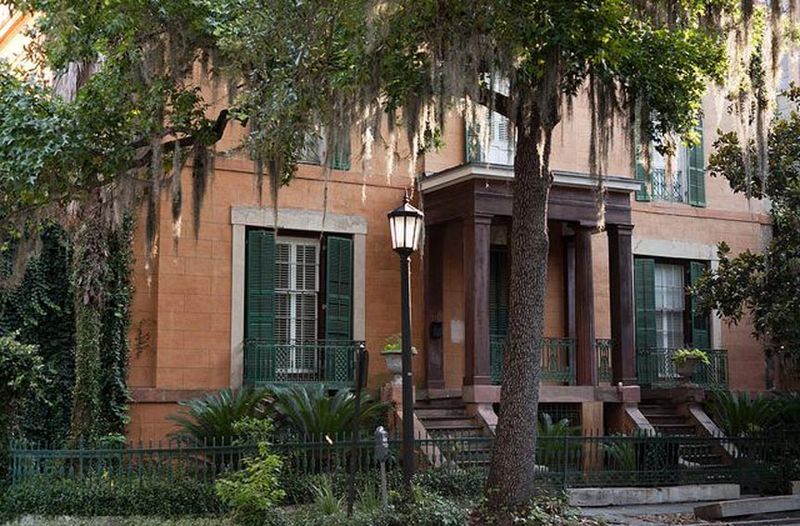
Looming over Madison Square, this massive Greek Revival mansion blends neoclassical grandeur with subtle Greek Doric and Italian Renaissance influences. Completed in 1840 for wealthy shipping merchant Francis Sorrel, the house features a unique side entrance and two-story portico that became architectural trendsetter for Savannah’s elite homes.
The mansion gained notoriety through tragic events – according to local lore, Sorrel’s wife Matilda jumped to her death after discovering her husband’s affair with an enslaved woman named Molly, who was later found hanged in the carriage house. These macabre tales have made the house a popular stop on Savannah’s ghost tours.
Historical significance extends beyond ghost stories, however. Confederate General Robert E. Lee stayed here as a guest, and the house was among the first declared a state landmark in Georgia. Today, visitors can tour both the magnificent main house and the supposedly haunted carriage house.
17. William Scarbrough House – Savannah
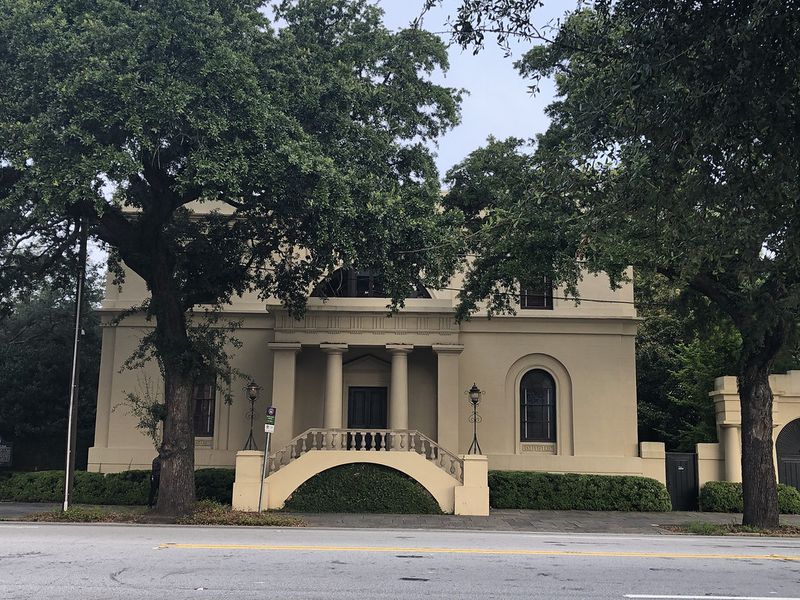
Maritime history and architectural innovation converge in this stunning Regency-style mansion built in 1819 for shipping magnate William Scarbrough, principal owner of the SS Savannah, the first steamship to cross the Atlantic Ocean. Designed by English architect William Jay, the house introduced Savannah to sophisticated European design concepts rarely seen in America at that time.
The façade features a distinctive rounded front with a semicircular portico supported by columns, creating a dramatic entrance. Inside, an oval drawing room, curved walls, and geometrically complex ceiling designs demonstrate Jay’s architectural genius and Scarbrough’s cosmopolitan tastes.
After Scarbrough lost his fortune following the steamship venture, the house served various purposes including a school for freed slaves after the Civil War. Today it houses the Ships of the Sea Maritime Museum, celebrating Savannah’s rich nautical heritage with model ships and maritime artifacts.
18. Swan House – Atlanta
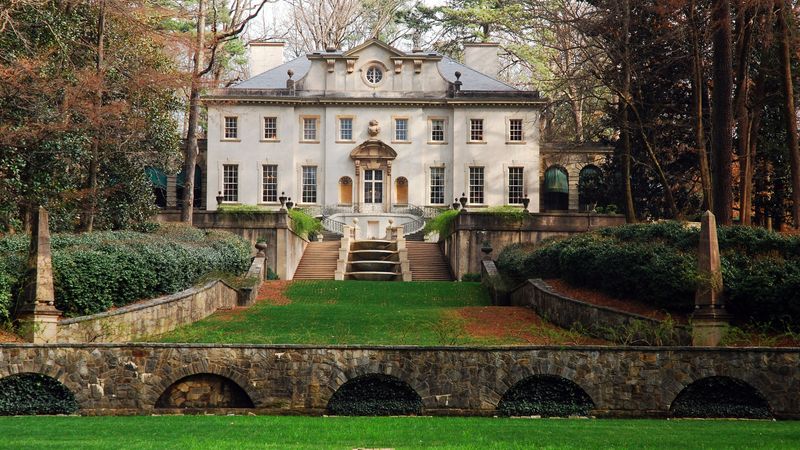
Film buffs might recognize this magnificent 1928 mansion from “The Hunger Games” movies, where it appeared as President Snow’s residence. Designed by Philip Trammell Shutze, Atlanta’s most celebrated classical architect, Swan House represents the pinnacle of the Second Renaissance Revival style with its perfect symmetry and Italian Baroque influences.
Named for the swan motifs that appear throughout its décor, the house was built for Edward and Emily Inman, heirs to a cotton brokerage fortune. The interior showcases an extraordinary collection of furnishings, many original to the house, reflecting the sophisticated tastes of Atlanta’s elite during the Jazz Age.
The cascading gardens, designed by the renowned Olmsted Brothers firm, complement the house with classical elements including fountains, statuary, and formal boxwood parterres. Today, Swan House stands as the crown jewel of the Atlanta History Center’s extensive grounds.
19. Rhodes Hall – Atlanta
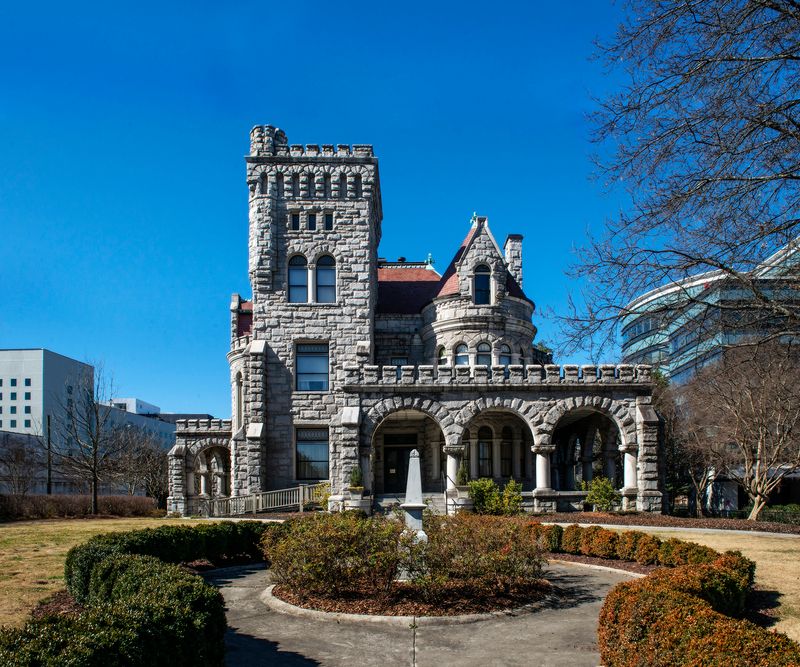
Often called “the castle on Peachtree,” this Romanesque Revival mansion stands as a striking contrast to Atlanta’s modern skyline. Built in 1904 from Stone Mountain granite, the house was the dream home of furniture magnate Amos Rhodes, who spared no expense in creating his urban showplace.
The interior’s most spectacular feature is a series of intricate stained glass windows depicting the rise and fall of the Confederacy controversial today but revealing of early 20th-century Southern perspectives. The grand mahogany staircase, hand-carved with intricate designs, remains one of the finest examples of Victorian craftsmanship in Georgia.
Rhodes Hall survived Atlanta’s aggressive urban renewal largely because it was purchased by the state in 1983. Now serving as headquarters for The Georgia Trust for Historic Preservation, the mansion hosts tours, special events, and educational programs about Georgia’s architectural heritage.
20. Chief Vann House – Chatsworth
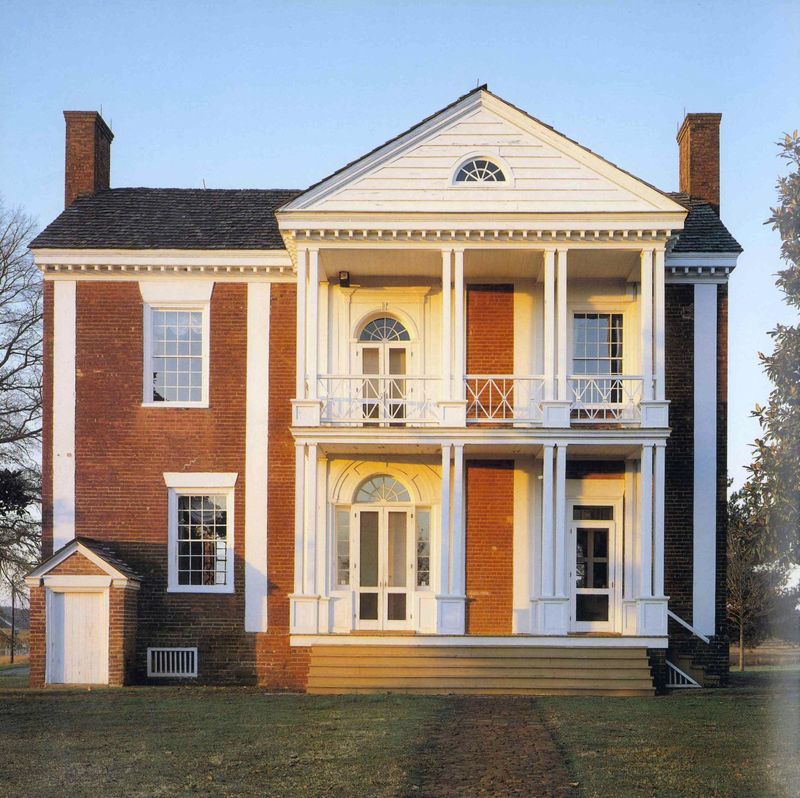
Known as the “Showplace of the Cherokee Nation,” this stunning red brick Federal-style mansion challenges many stereotypes about Native American history. Completed in 1804 by wealthy Cherokee leader James Vann, the house blended traditional European architecture with innovative features like a remarkable cantilevered staircase.
The two-story brick home featured luxuries uncommon on the frontier – crystal chandeliers, fine furnishings, and hand-painted murals. Vann’s prosperity came from operating a trading post, tavern, and plantation along the Federal Road that connected Georgia to Tennessee.
Tragically, the Vann family was forced from their home during the 1830s Trail of Tears. The house fell into disrepair before being rescued and restored in the 1950s. Today, this state historic site offers powerful insights into Cherokee culture, the complex intersection of Native and European traditions, and the devastating impact of forced removal policies.
21. Pebble Hill Plantation – Thomasville
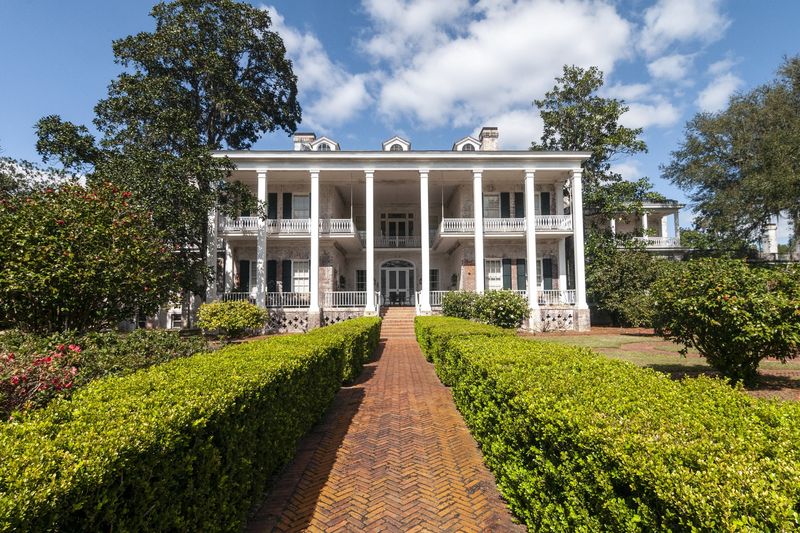
Unlike many antebellum plantations, Pebble Hill reached its zenith in the early 20th century as a luxurious hunting retreat for the northern elite. The 26-room main house, rebuilt in 1936 after a fire, blends Colonial Revival and Neoclassical styles into a gracious country estate surrounded by towering live oaks draped with Spanish moss.
What truly distinguishes Pebble Hill is its extraordinary collection of sporting art one of America’s finest displayed throughout the mansion. The estate’s last owner, Elisabeth Ireland Poe, was an avid equestrian and art collector who preserved the property as a museum.
Beyond the main house, visitors can explore 38 historic structures including a schoolhouse, firehouse, and stables across the 3,000-acre property. The plantation’s unusual history as a northern-owned sporting estate offers a different perspective on Georgia’s complex past and the evolution of Southern plantations after Reconstruction.
22. Bulloch Hall – Roswell
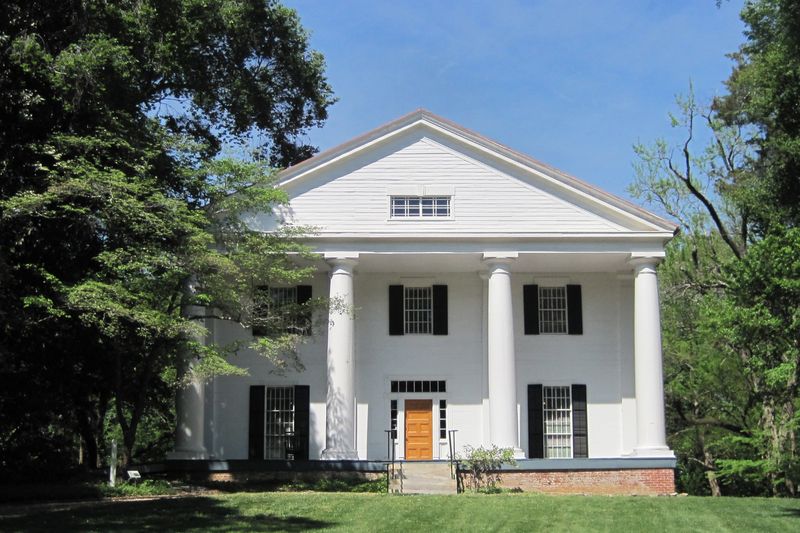
Presidential history permeates this stately Greek Revival mansion, childhood home of Mittie Bulloch, mother of President Theodore Roosevelt. Built in 1839 by Major James Stephens Bulloch, the house represents the prosperity of Roswell’s founding families who established the town’s cotton mills.
The wedding of Mittie Bulloch to Theodore Roosevelt Sr. in 1853 remains the mansion’s most celebrated event. Their lavish Christmas wedding was a major social occasion, bringing northern Roosevelt family members south before the Civil War’s divisions. Later, both Theodore Roosevelt and Franklin D. Roosevelt visited their ancestral home.
Architectural highlights include the distinctive temple-front design with soaring columns and a central hallway that captures cooling breezes – an early form of air conditioning. Today, the house museum features period furnishings, family artifacts, and special exhibits exploring the Roosevelt family connections and antebellum Southern life.
23. Hay House (Johnston‑Felton‑Hay House) – Macon
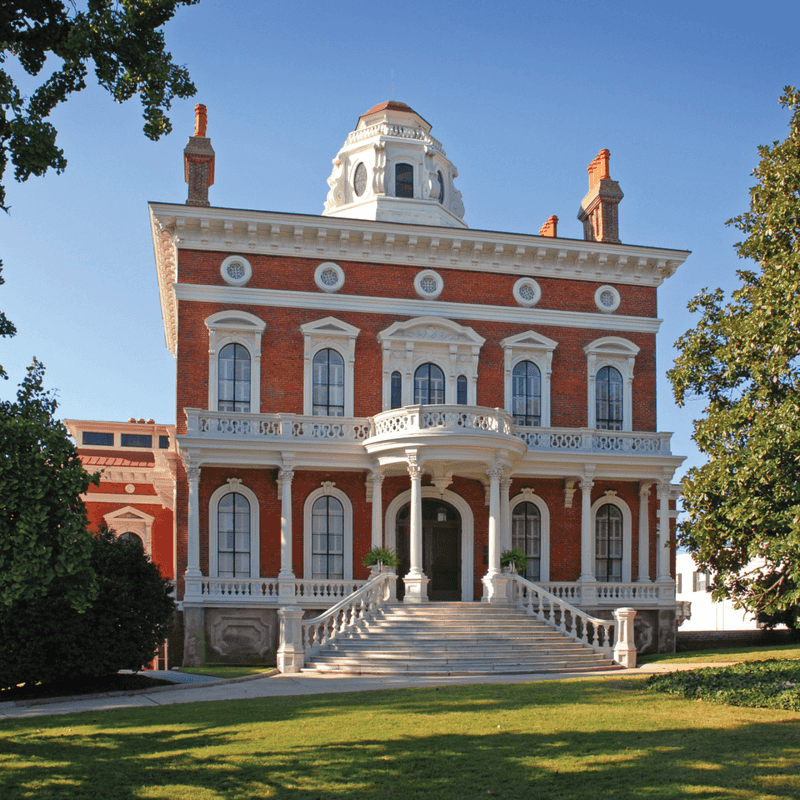
Often called the “Palace of the South,” this astonishing 18,000-square-foot Italian Renaissance Revival mansion towers over Macon’s historic district. Completed in 1859 after four years of construction, the house incorporated technological marvels decades ahead of their time – indoor plumbing, central heating, an in-house kitchen, and even a speaker tube system for communication between rooms.
The interior dazzles visitors with 15-foot ceilings, elaborate plasterwork, and a stunning three-story domed rotunda topped with stained glass. The mansion’s most spectacular space is the music room featuring hand-painted murals and a massive crystal chandelier imported from Europe.
Three prominent Macon families owned the house over its history, each adding their distinctive touches while preserving its grandeur. Today, as a National Historic Landmark, Hay House stands as one of America’s most significant examples of antebellum residential architecture and technological innovation.
24. Old Governor’s Mansion – Atlanta

Standing proudly in Atlanta’s historic district, this imposing Greek Revival mansion served as the official residence for Georgia’s governors during a pivotal period in the state’s development. Built in 1868, shortly after Atlanta became the state capital, the mansion witnessed Georgia’s post-Civil War reconstruction and emergence as a New South economic power.
The architectural design features massive Doric columns supporting a classical pediment, creating an appropriately dignified appearance for the governor’s residence. Inside, the formal rooms showcase period furnishings that reflect changing tastes across different gubernatorial administrations.
Particularly fascinating are the preserved service areas that reveal the behind-the-scenes work required to maintain such a grand residence. The mansion served as the official governor’s home until 1968, when a new residence was constructed in Buckhead. Today, guided tours offer insights into both architectural history and Georgia’s political evolution.

